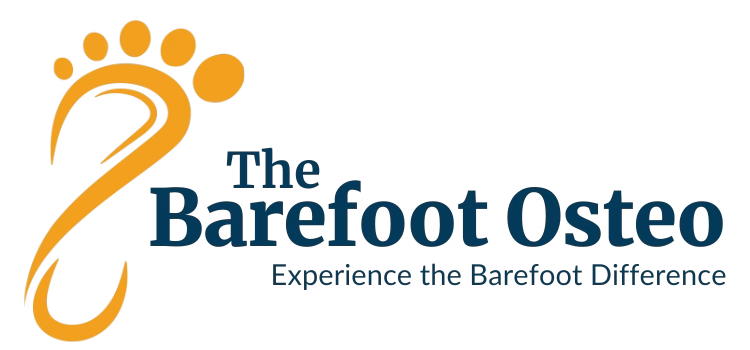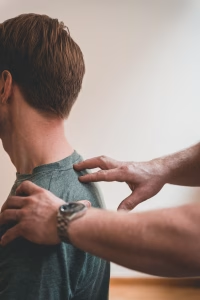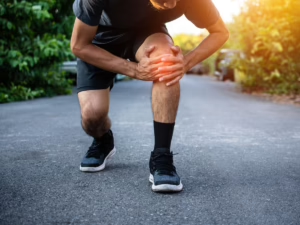Introduction: A Unique Lens on Health
At The Barefoot Osteo Warrnambool, Osteopathic Philosophy forms the foundation of our approach to health and healing. This philosophy emphasizes the body’s inherent ability to heal itself and views it as an interconnected whole. By focusing on the relationship between structure and function, Osteopathic Philosophy promotes balance, mobility, and vitality in achieving overall well-being.
Imagine a healthcare approach that doesn’t just address symptoms but works with your body to unlock its natural healing potential. This is the essence of osteopathy, and it’s why we approach every treatment at The Barefoot Osteo with care and precision, aiming to restore balance, mobility, and stability.
Core Principles of Osteopathic Philosophy
The Body as a Unified Whole
At the heart of osteopathy is Osteopathic Philosophy, which views the body as a unified whole, capable of self-healing when balance is restored. Osteopathy sees the body as an interconnected system where every part affects the whole. For example, tension in the lower back can influence posture, balance, and even digestion. By addressing the root cause of an issue rather than just treating symptoms, osteopathy promotes a more sustainable path to wellness.
This principle recognizes that physical, emotional, and functional health are deeply intertwined. Osteopaths aim to understand these relationships and how imbalances in one area may create cascading effects throughout the body. This holistic perspective allows for comprehensive care tailored to each individual.
Structure and Function are Interrelated
Healthy function depends on proper structure. Misalignments, restrictions, or imbalances in the musculoskeletal system can disrupt the body’s ability to move, heal, and perform optimally. Osteopathy aims to correct these issues, helping the body restore its natural function.
For example, when the spine is aligned and free of restriction, the nervous system operates more effectively, which can improve overall health. This relationship between structure and function highlights the importance of addressing the root causes of dysfunction, not just the symptoms.
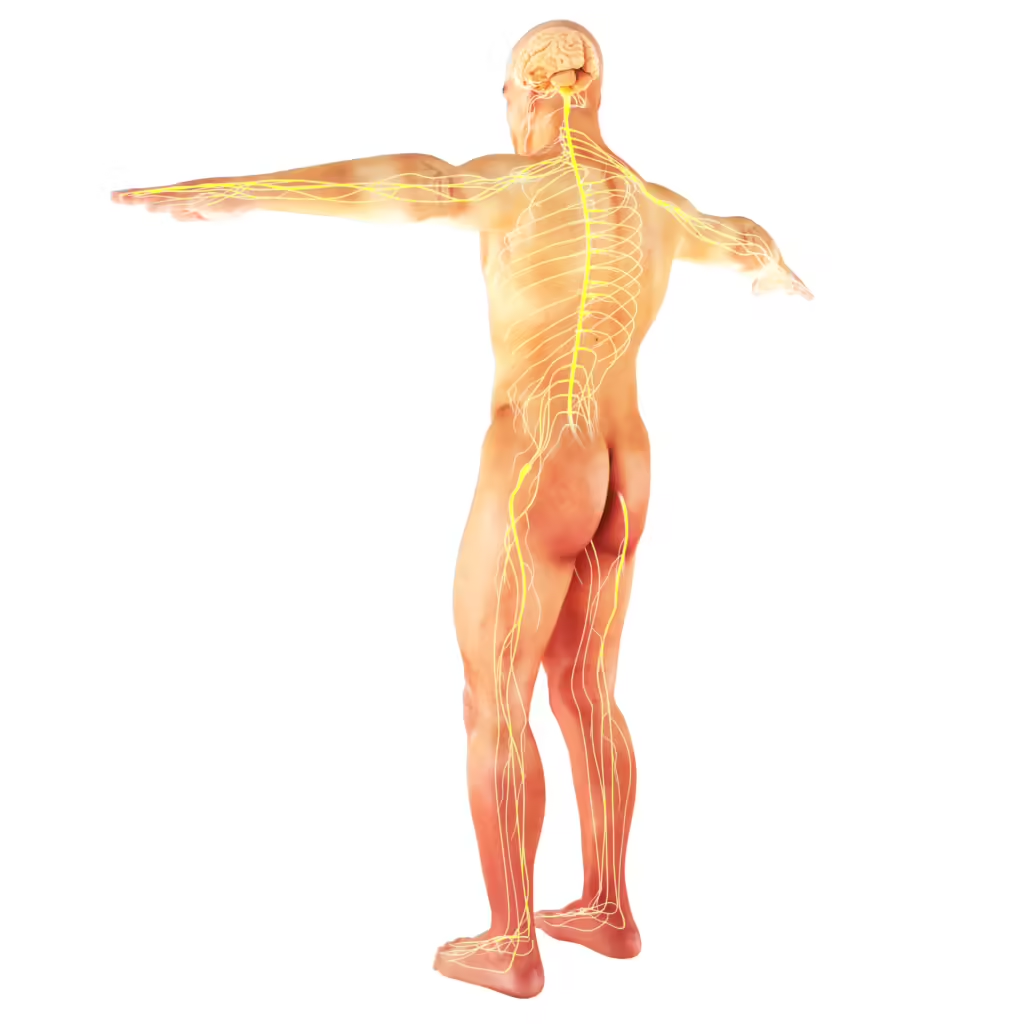
The Body’s Inherent Ability to Self-Heal
Central to osteopathy is the belief that the body is naturally inclined to heal itself when conditions are optimal. Osteopathic treatments aim to remove obstacles to this healing, such as restricted motion, poor posture, or tension in connective tissues.
This principle encourages a collaborative approach to health. By empowering the body’s innate mechanisms, osteopathy helps patients take an active role in their recovery and long-term well-being. It’s not about “fixing” the body but facilitating its natural processes.
Clinical Practice is the Application of Philosophy
Osteopathy’s philosophical principles guide every aspect of clinical practice. Each treatment is grounded in the belief that the body functions as a whole, and every intervention seeks to enhance this integration.
This means that assessments and treatments aren’t cookie-cutter; Instead, they are dynamic processes that adapt to the unique needs of each individual. By applying these principles consistently, osteopaths ensure that their work is rooted in the values of holistic health and sustainable healing.
The Role of Circulation and Motion
As A.T. Still famously stated, “The rule of the artery is supreme.” Circulation ensures that tissues receive the nutrients and oxygen they need while efficiently removing waste. Movement, both internal and external, is vital to maintaining this balance.
In practice, this principle reinforces the importance of mobility—not just in the musculoskeletal system but also within the body’s internal networks, such as the circulatory and lymphatic systems. By addressing these dynamics, osteopathy enhances overall health and vitality.
Key Approaches in Osteopathy
Applying Philosophy to Manual Medicine
Osteopathy distinguishes itself from other manual therapies through its foundational philosophy, which emphasizes the body’s inherent ability to heal and the interconnectedness of its systems. While physiotherapy, chiropractic care, and massage therapy also employ manual techniques, osteopathy’s unique approach lies in its holistic perspective and individualized treatment plans.
In osteopathy, practitioners view the body as an integrated whole, where structure and function are interdependent. This means that rather than focusing solely on symptomatic areas, osteopaths assess and treat the entire body to identify underlying causes of discomfort. For instance, a patient presenting with knee pain might receive treatment not only for the knee but also for related areas such as the hips, lower back, and even the feet, recognizing that dysfunction in one area can affect others.
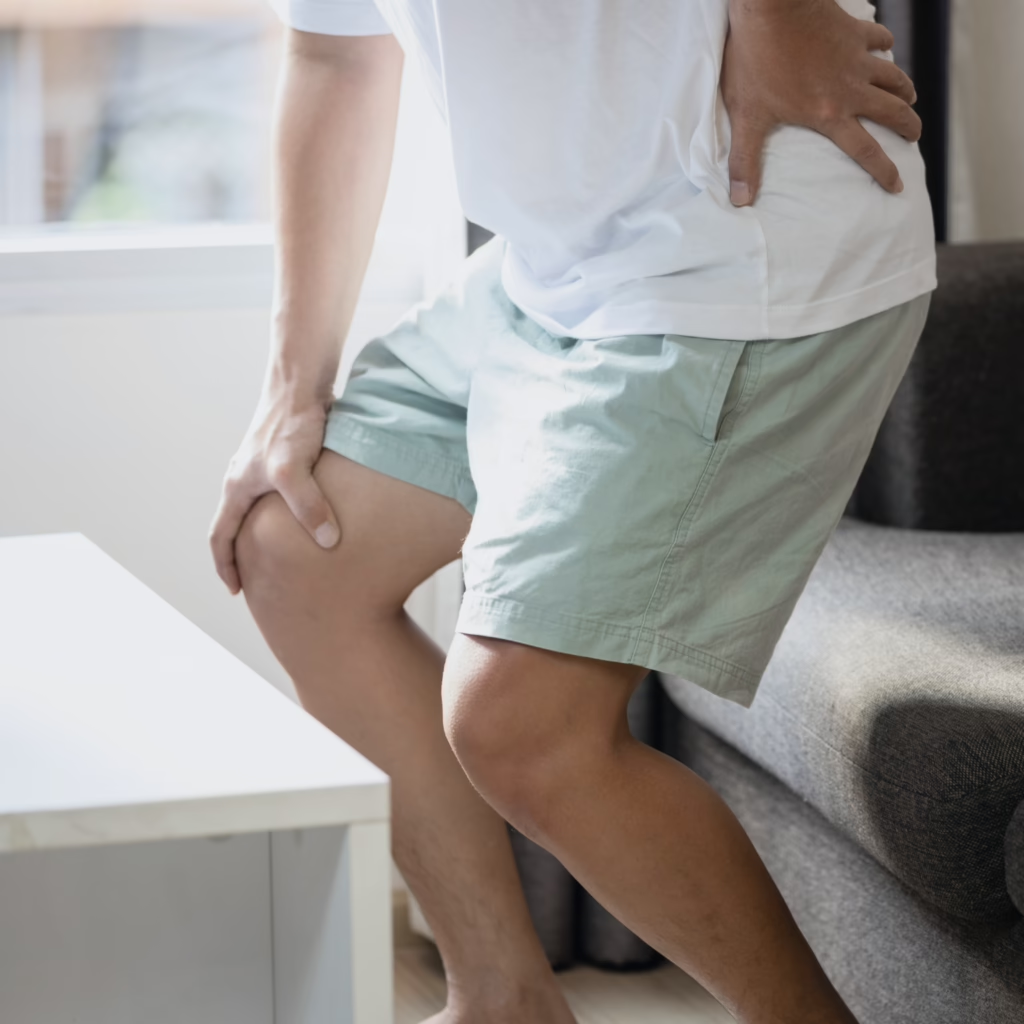
This holistic approach contrasts with some other modalities that may concentrate primarily on specific symptoms or regions. By addressing the root causes and considering the body’s overall balance, osteopathy aims to facilitate natural healing processes and promote long-term well-being.
It’s important to note that while osteopathy shares certain techniques with other manual therapies, its guiding philosophy and comprehensive assessment strategies set it apart. This distinction underscores the importance of individualized care and the belief in the body’s capacity to self-heal when provided with the appropriate support.
Natural Movement: The Barefoot Approach
At The Barefoot Osteo, we champion the concept of natural movement, emphasizing the benefits of activities like barefoot walking. Engaging in barefoot movement can enhance stability, balance, and alignment by allowing the feet to function as nature intended. This practice strengthens foot muscles, improves proprioception (awareness of body position), and encourages better posture.
Incorporating natural movement into daily routines aligns with osteopathic principles by promoting the body’s inherent ability to move efficiently and heal itself. By reconnecting with these fundamental movement patterns, individuals can support their musculoskeletal health and overall well-being. This practice reflects the core tenets of Osteopathic Philosophy, promoting movement patterns that support the body’s structural and functional health.
Manual Techniques: Hands-On Healing
Osteopathy employs a variety of manual techniques aimed at relieving tension, improving mobility, and restoring balance within the body. These techniques include soft tissue manipulation, joint mobilization, and myofascial release. Each method is tailored to the individual’s specific needs, ensuring a personalized approach to care.
For example, when addressing shoulder discomfort, an osteopath may utilize gentle stretching and mobilization to improve joint function and alleviate muscle tension. Every hands-on approach in osteopathy is guided by Osteopathic Philosophy, ensuring techniques align with the body’s natural rhythms and healing potential.
By focusing on the body’s interconnected systems, osteopathic manual techniques aim to address the root causes of discomfort, facilitating the body’s natural healing processes and enhancing overall function.
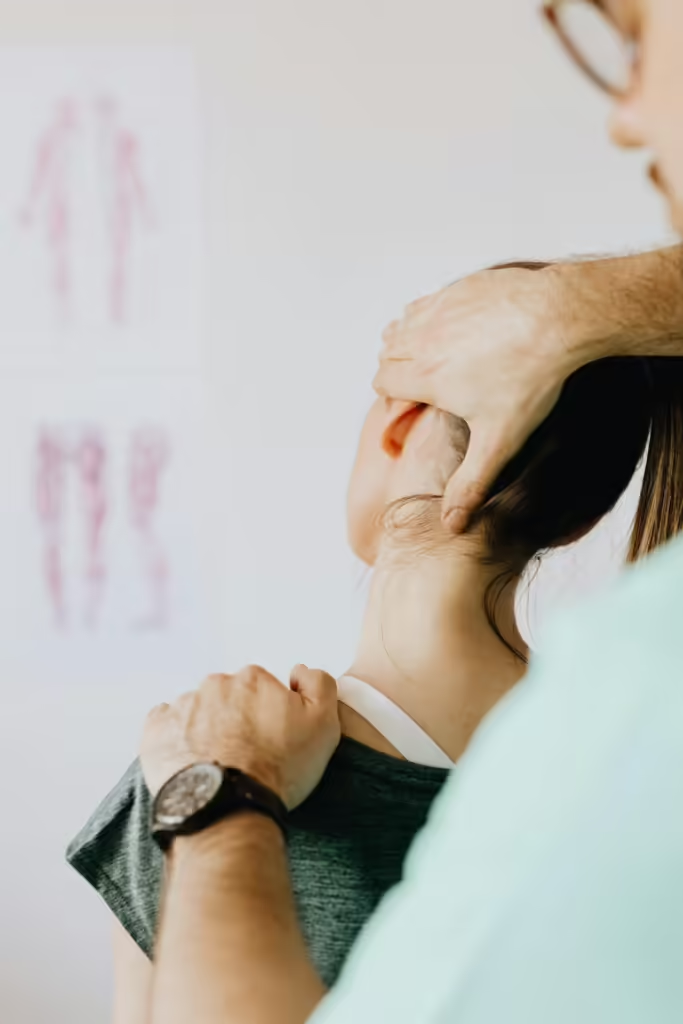
Osteopathy in the Cranial Field (OCF): A Gentle Touch
Osteopathy in the Cranial Field (OCF), also known as cranial osteopathy, involves the application of gentle pressure to the skull and sacrum to assess and address subtle movements and tensions. This approach is based on the principle that the body’s natural rhythms, particularly those of the cranial bones and cerebrospinal fluid, play a crucial role in overall health.
Practitioners of OCF believe that restrictions or imbalances in these cranial rhythms can contribute to various health issues, including headaches, stress, and chronic pain. By applying light, precise touch, osteopaths aim to release these restrictions, promoting the body’s self-healing capabilities.
At The Barefoot Osteo, we integrate OCF into our practice to complement other treatment methods, providing a holistic approach that supports both physical and emotional well-being. This gentle technique is suitable for individuals of all ages and can be particularly beneficial for those seeking relief from tension-related conditions.
Holistic Health Dimensions
Osteopathy’s philosophy doesn’t just address physical symptoms; it embraces a whole-person approach, considering physical, psychological, and functional well-being as interconnected aspects of health. By aligning these dimensions, osteopathy supports long-term vitality and balance.
Physical Health
Osteopathy works to restore the body’s structural integrity, relieving pain and improving movement. Whether it’s releasing tight muscles, aligning the spine, or addressing joint restrictions, every treatment supports the body’s ability to function naturally.
For example, someone experiencing recurring tension headaches might benefit from osteopathic adjustments that target the neck and upper back, where muscle tension and postural strain often originate. By addressing these physical imbalances, osteopathy alleviates pain and improves overall quality of life.
Psychological Health
Stress, anxiety, and emotional strain can manifest as physical symptoms—tight shoulders, tension headaches, or disrupted sleep. Osteopathy recognizes this mind-body connection, using gentle techniques to reduce tension and promote relaxation.
For instance, cranial osteopathy (OCF) can help calm the nervous system, supporting mental clarity and reducing the physiological effects of stress. By addressing both the physical and psychological components of health, osteopathy provides a holistic pathway to well-being.
Functional Health
Functional health is about how well your body performs daily activities, from walking and bending to lifting and stretching. Osteopathy enhances functional health by addressing movement restrictions and supporting proper alignment.
For example, improving hip mobility for someone who struggles with stiffness can enhance their ability to walk, exercise, or perform day-to-day tasks without discomfort. This focus on restoring natural movement patterns aligns with osteopathy’s goal of promoting sustainable health.

Bridging Dimensions to Real-Life Applications
At The Barefoot Osteo, we integrate these holistic dimensions into every treatment plan. By addressing the physical, psychological, and functional aspects of health, we help clients achieve lasting results that go beyond symptom relief. This comprehensive approach ensures that each treatment is tailored to the individual’s needs and goals, creating a foundation for improved well-being.
Real-Life Applications of Osteopathy
Osteopathy is deeply rooted in practical, real-world applications, making it an effective approach for addressing everyday health challenges. By combining its philosophical principles with hands-on techniques, osteopathy provides tailored solutions that meet the unique needs of each client.
A Patient’s Journey: Chronic Lower Back Pain
Imagine a client in Warrnambool experiencing persistent lower back pain—a common issue caused by prolonged sitting, poor posture, or repetitive strain. At The Barefoot Osteo, the journey begins with a detailed consultation and assessment, guided by the core osteopathic philosophy that the body is an interconnected system with an innate ability to heal.
For instance, restricted hip mobility and uneven weight distribution during walking might be placing excess strain on the lower back. However, an osteopath doesn’t stop there; the treatment process also considers behavioral patterns, such as prolonged sitting or workplace ergonomics, and psychological stressors that may contribute to muscle tension and postural imbalances.
Guided by osteopathic principles, the treatment plan is carefully tailored to address these findings holistically. This might include manual techniques such as soft tissue manipulation, joint mobilization, and myofascial release to improve mobility and restore alignment. The philosophy of osteopathy also informs the advice given: the client might receive personalized guidance on incorporating natural movement practices, ergonomic adjustments, and mindfulness techniques to reduce stress.
Crucially, the advice and treatment are not generic; they stem from the osteopath’s understanding of how each component—physical, behavioral, and psychological—affects the client’s overall health. For example, a client with a demanding desk job might be encouraged to adopt active sitting practices or take movement breaks throughout the day. Likewise, techniques to reduce stress, such as breathwork, could complement physical treatment, amplifying the body’s self-healing capabilities.
By applying osteopathic philosophy to both treatment and advice, The Barefoot Osteo offers a comprehensive approach that doesn’t just alleviate pain but empowers clients to improve their overall quality of life. This creates sustainable, long-lasting results rooted in the body’s natural capacity to thrive. This case study highlights how Osteopathic Philosophy informs both treatment plans and the practical advice provided to clients.
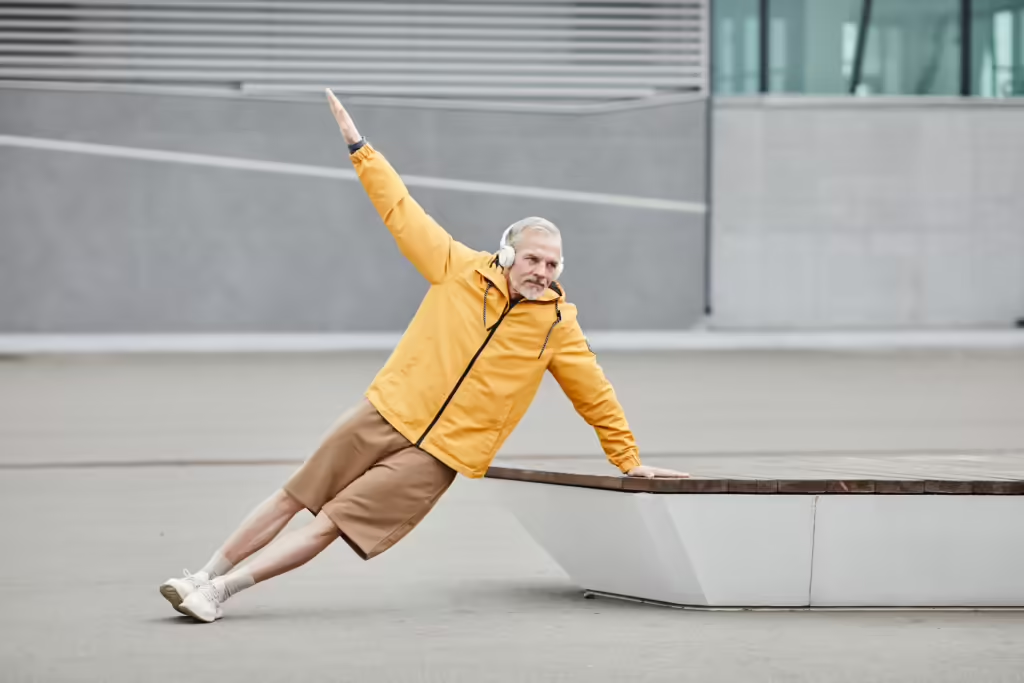
FAQs About Osteopathy as a Philosophy
What makes osteopathy different from other treatments?
Osteopathy stands apart because it doesn’t just focus on treating symptoms—it emphasizes understanding the root causes of dysfunction by viewing the body as an interconnected whole. While many treatments target specific issues, osteopathy works holistically, addressing how structural, functional, and even behavioral factors influence health. This approach ensures each treatment plan is tailored to the individual, combining hands-on techniques with advice that supports long-term wellness.
How does osteopathy support movement and balance?
Osteopathy restores movement and balance by addressing restrictions and imbalances within the musculoskeletal system. Techniques such as joint mobilization, soft tissue release, and advice on natural movement practices help improve alignment and stability. By focusing on the body’s natural biomechanics, osteopathy enhances overall function, empowering individuals to move with greater ease and confidence.
Is osteopathy suitable for chronic conditions?
Yes, osteopathy is highly effective for chronic conditions like back pain, arthritis, or recurring headaches. Its holistic philosophy allows osteopaths to look beyond the site of discomfort and consider contributing factors such as posture, stress, or past injuries. Treatments aim to reduce pain, improve mobility, and address the underlying causes of chronic issues, offering sustainable relief and better quality of life.
What can I expect from an osteopathic session?
An osteopathic session is a collaborative process tailored to your needs. It typically involves a detailed assessment of your posture, movement, and overall health, followed by hands-on techniques to release tension and improve alignment. Your osteopath will also provide advice on exercises, lifestyle changes, or ergonomic adjustments to support your recovery. The goal is to empower you with tools and strategies to maintain your health between sessions.
A Philosophy in Action
Osteopathic Philosophy is more than a set of principles; it’s a dynamic approach that empowers the body to achieve balance, mobility, and vitality. By applying its core principles, osteopathy empowers individuals to address the root causes of discomfort, improve mobility, and achieve sustainable health.
Through approaches like natural movement, hands-on techniques, and cranial osteopathy, osteopathy provides a comprehensive and personalized path to wellness. At The Barefoot Osteo, we take this philosophy a step further, integrating these techniques with practical advice to help you make meaningful, long-lasting changes in your life.
Whether you’re managing chronic pain, recovering from an injury, or looking to improve your overall balance and mobility, osteopathy offers a powerful, holistic solution. It’s not just about alleviating pain—it’s about empowering you to move freely, live fully, and thrive.
Ready to experience the barefoot difference? Book your appointment today and discover how osteopathy can help you achieve a healthier, more balanced life. Your body already has the potential to heal—it’s time to unlock it.
References:
Still, A.T. (1899). Philosophy of Osteopathy. Hudson-Kimberly Publishing Co.
Still, A.T. (1902). The Philosophy and Mechanical Principles of Osteopathy. Hudson-Kimberly Publishing Co.
Ward, R.C. (Ed.). (2003). Foundations for Osteopathic Medicine (2nd ed.). Lippincott Williams & Wilkins.
Chaitow, L. (2005). Cranial Manipulation: Theory and Practice (2nd ed.). Churchill Livingstone.
Frymann, V.M. (1976). The Collected Papers of Viola M. Frymann: Legacy of Osteopathy to Children.
Korr I. M. (1979). The spinal cord as organizer of disease processes: II. The peripheral autonomic nervous system. The Journal of the American Osteopathic Association, 79(2), 82–90.
King, H.H., & Liem, T. (2008). Cranial Osteopathy: Principles and Practice. Elsevier Health Sciences.
Bordoni, B., & Escher, A. R., Jr (2021). Osteopathic Principles: The Inspiration of Every Science Is Its Change. Cureus, 13(1), e12478.
Chila, A.G. (Ed.). (2010). Foundations of Osteopathic Medicine (3rd ed.). Lippincott Williams & Wilkins.
